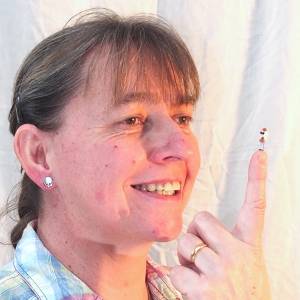Black Bean Aphid
I wondered what creature was climbing on the bud of our magnolia.
It turned out that it is an adult black bean aphid. It was rather big for an aphid and I like its white stripes on its legs.
"The black bean aphid has both sexual and asexual generations in its life cycle. It also alternates hosts at different times of year. The primary host plants are woody shrubs, and eggs are laid on these by winged females in the autumn. The adults then die and the eggs overwinter. The aphids that hatch from these eggs in the spring are wingless females known as stem mothers. These are able to reproduce asexually, giving birth to live offspring, nymphs, through parthenogenesis. The lifespan of a parthenogenetic female is about 50 days and during this period, each can produce as many as 30 young. The offspring are also females and able to reproduce without mating, but further generations are usually winged forms. These migrate to their secondary host plants, completely different species that are typically herbaceous plants with soft, young growth.
...
As autumn approaches, the winged forms migrate back to the primary host plants. Here, both males and sexual females are produced parthogenetically, mating takes place, and these females lay eggs in crevices and under lichens to complete the lifecycle. Each female can lay six to ten black eggs which can survive temperatures as low as −32 °C (−26 °F)" *Wikipedia

Comments
Sign in or get an account to comment.


